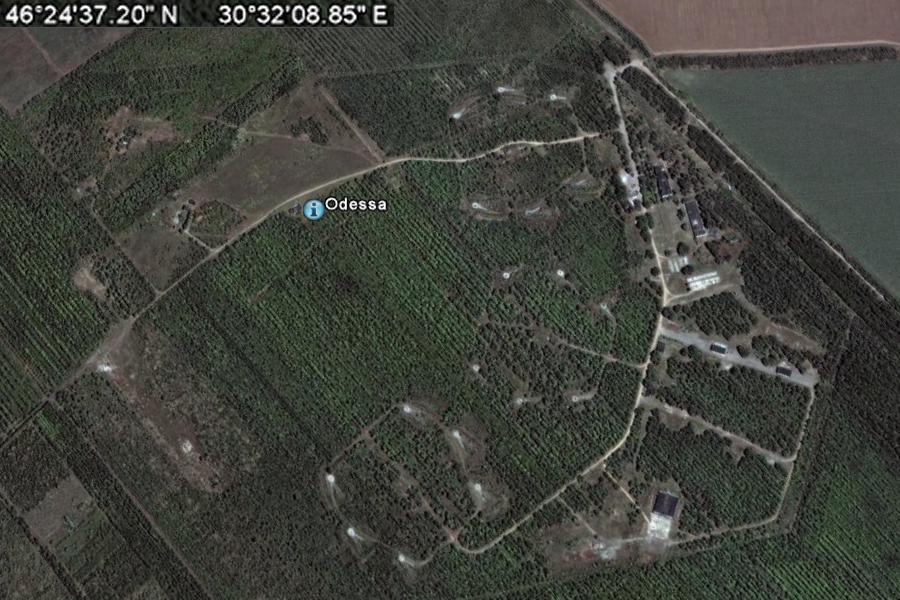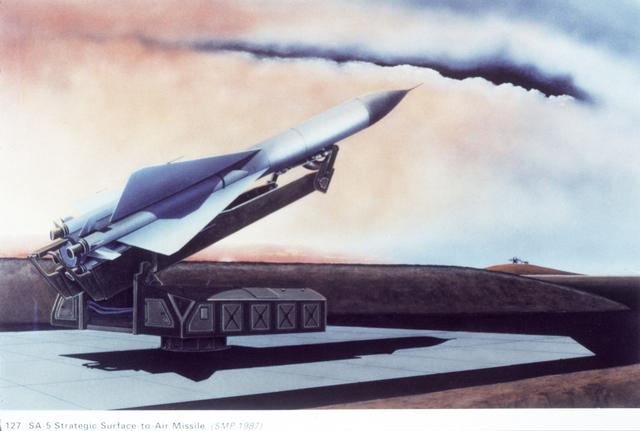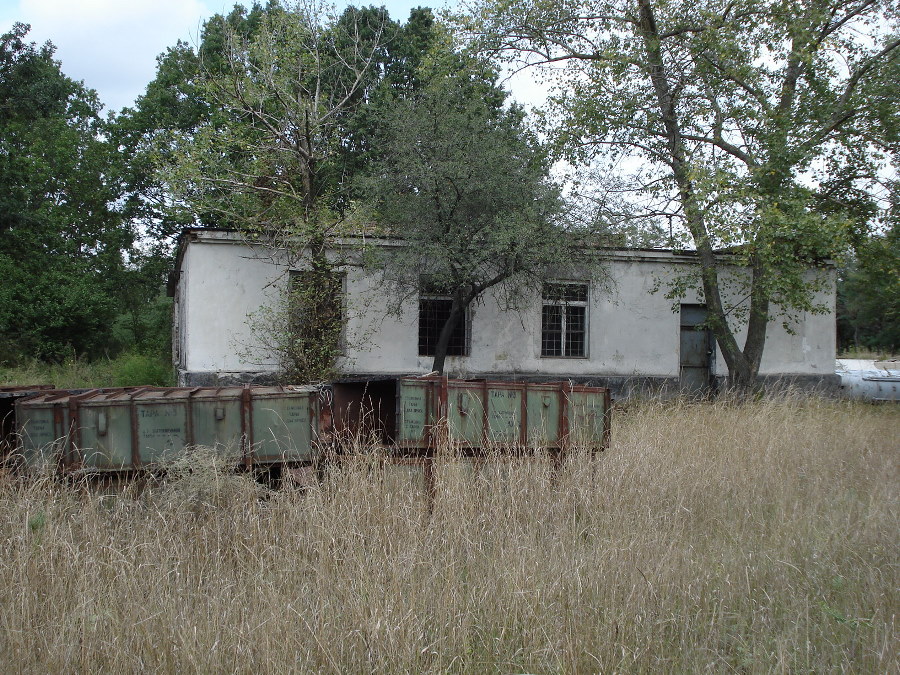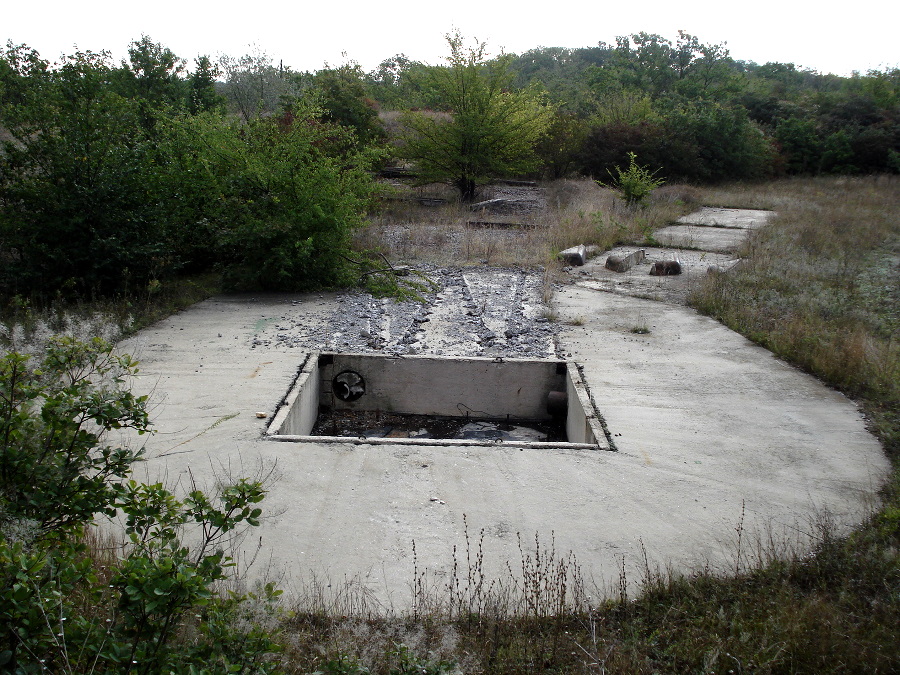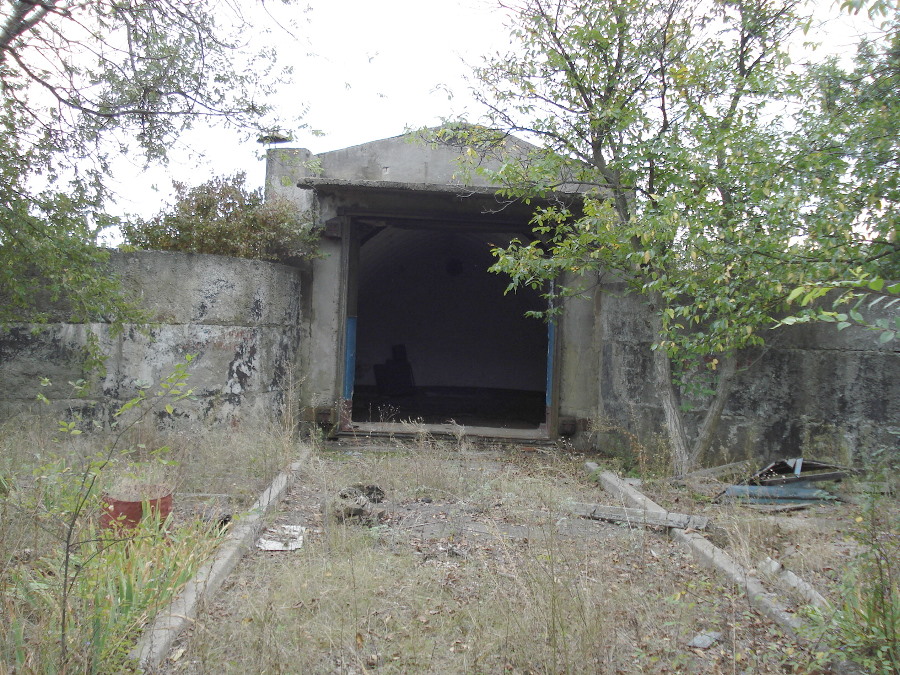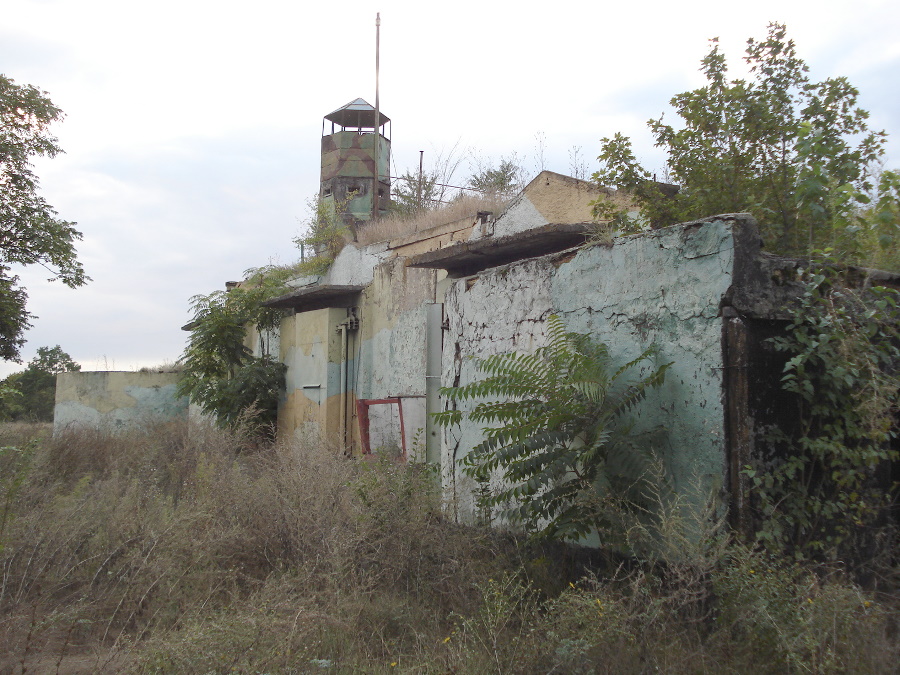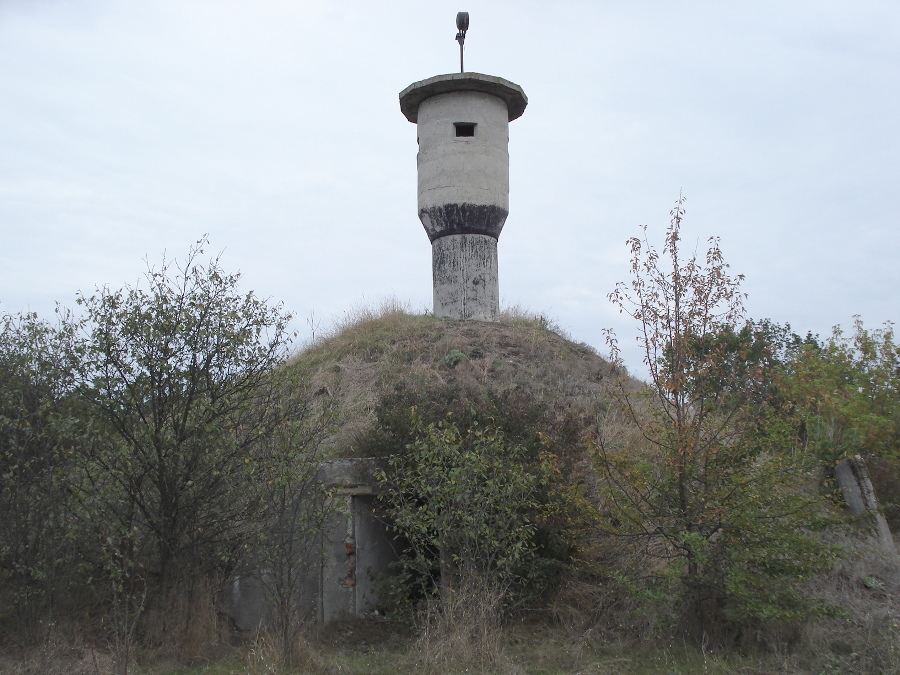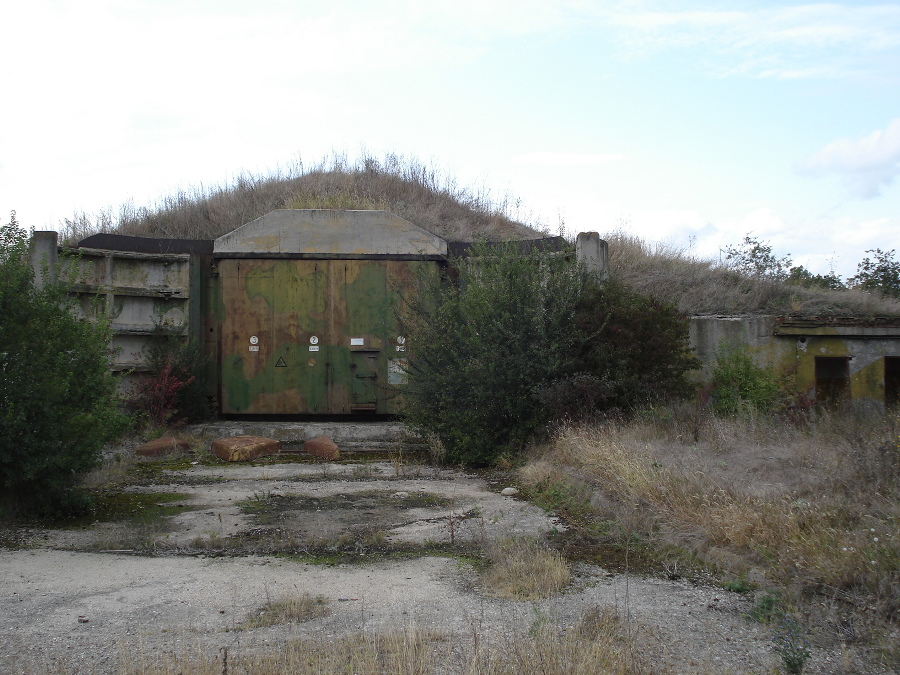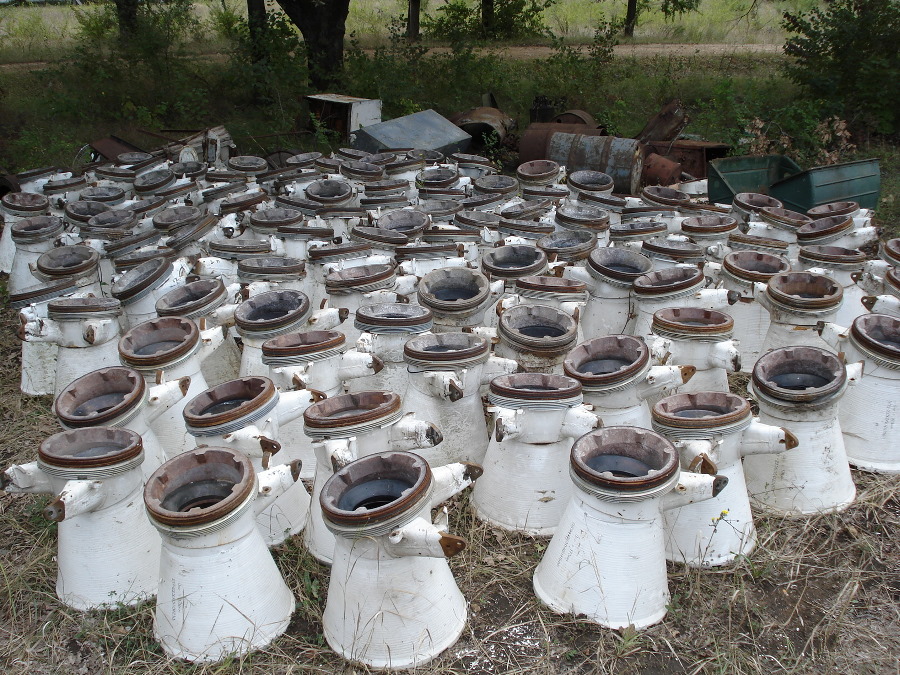|
|
||||||||||||||||||||
|
Odessa, Ukraine No longer in Service +46° 24' 37.20", +30° 32' 08.85" .. Odesssa 106 S-200 (SA-5 Gammon) Battalion
S-200 SA-5 GAMMON The S-200 SA-5 GAMMON is a medium to high -altitude surface-to-air missile system. The single-stage missile has four jettisonable, wraparound solid propellant boosters, each of which is is 4.9 m long and 0.48 m in diameter with a single fin spanning 0.35 m from the booster body. The missile is 10.72 m long overall with a wing span of 2.85 m. The main body is 0.85 m in diameter and has a solid fuel dual thrust sustainer rocket motor. Each missile battalion has one 320 km range P-35M BARLOCK-B E/F-band target search and acquisition radar with an integral D-band IFF system, one 270 km range SQUARE PAIR H-band missile guidance radar, and six trainable semi-fixed single rail launchers. The missile's minimum range of 60 km is due to the booster burn time and jettison requirements, limiting the system to engagements against relatively large unmaneuverable targets at ranges up to 250 km. Guidance beyond the 60 km booster jettison point is by course correction command signals from the SQUARE PAIR radar with the S-200's own active radar terminal homing seeker head activated near the projected intercept point for final guidance. The large HE warhead is detonated either by a command signal or the onboard proximity fusing system. When fitted with a nuclear warhead only the command detonation option is used. SOURCE: FAS.ORG
Related Links:
...
S-200 (SA-5 Gammon)
Details The S-200 (NATO: SA-5 Gammon) is a medium- to high-altitude mobile surface-to-air missile designed, manufactured, and deployed by the Russians. Its principal purpose is to track, target, and destroy aircraft and cruise missiles. Since the fall of the Soviet Union, Russia has proliferated the S-200 throughout Asia, Europe, and the Middle East as a means of financing its ailing economy. In 1966, the Soviet Union conducted state trials of the S-200 system. Sources indicate that the initial missile did not meet its stated specifications: for instance, its original range on paper was 200 kilometers, although in reality it was only effective up to 160 kilometers. Nevertheless, Moscow still considered the missile a vital part of its defensive architecture, and made the system operational. The S-200 began its initial deployment in 1967.(1) By 1969, the Soviet Union had deployed approximately 75 S-200 battalions around the nation’s military bases, industrial complexes, and population centers. The system was designed to operate in coordination with Soviet MiG fighters: the latter would guard the approaches to S-200 sites, which in turn would guard against cruise missile and aircraft attack.(2) During this same period, the Soviet Union was also deploying its first Galosh (SH-04/ABM-1) interceptors in System A-35 around Moscow. In 1975, the Soviets completed an upgrade of the S-200, which featured a longer range of 250 kilometers and a modernized fire-control radar. The Soviets hoped that the upgraded S-200 would be able to engage short-range attack missiles in addition to aircraft and cruise missiles. These attempts failed. Nevertheless, the system was deployed in large numbers during the late 1970s and the early 1980s.(3) By the mid-1980s, 130 sites and 1,950 launchers were operational.(4) continued...
..
In addition to its maximum range of 250 kilometers, each S-200 had a maximum altitude of 35 kilometers and speed of 2,500 meters per second. According to Russian sources, the S-200 could engage aircraft and cruise missiles with velocities of up to 1,100 meters per second. To destroy these targets, each S-200 was equipped with a 217-kilogram high explosive warhead. There is evidence that some were also fielded with nuclear warheads.(5) To reach its specified range of 250 kilometers, each S-200 was equipped with a main liquid-fueled rocket motor as well as four solid propellant strap-on boosters. Each booster was 4.9 meters long and 0.48 meters in diameter. The missile itself was 10.72 meters long and 0.85 meters in diameter with a wing span of 2.85 meters. It had a launch weight of 7,000 or 8,000 kilograms, according to different sources.(6) In the 1980s, the Soviet Union introduced its next generation mobile surface-to-air missiles: the S-300P (NATO: SA-10 Grumble) and the S-300V (NATO: SA-12A Gladiator, SA-12B Giant). Similar in many ways to the U.S. Patriot missile system, the S-300P and the S-300V provided better range, accuracy, and kill probability than the S-200, as well as the added ability to shoot down ballistic missiles.(7) The introduction of superior SAM systems led to a gradual phasing out of the S-200. According to Jane’s Missiles and Rockets, by 1998 the total number of S-200 launchers had shrunk to approximately 200. The following year, only four regiments remained. By 2001, the S-200 remained in service with a Russian single unit.(8) Faced with a large number of obsolete weapons, Moscow increased proliferation of its S-200 hardware throughout Asia, Europe, and the Middle East. Following the Soviet Union’s 1991 implosion, the Russians further increased S-200 sales as a means of financing their ailing economy.(9) The system has been exported to a number of countries, including Bulgaria, former Czechoslovakia, Hungary, Poland, India, North Korea, Libya, Syria, and Iran.(10) Continued...
..
In 1998, the Russian Air Defense Command announced a plan to sell off all of its S-200 assets to export clients.(11) Since that announcement, proliferation of the S-200 has been especially rampant. In 2002, the Russian state arms exporter, Rosoboronexport, estimated its potential revenue for Russian air defense systems at $1 billion, of which the S-200 constituted of significant portion.(12) In October 2001, one of these proliferated S-200s, following its sale to the Ukraine, accidentally shot down a Russian Tu-154 civilian airliner during military exercises in the Crimea. Sources indicate that the S-200 missed its intended target—a La-17 unmanned aerial target—and locked on to the Tu-154. The Russian airliner exploded over the Black Sea, killing all 76 people aboard and underscoring the dangers of SAM proliferation.(13) Another problem with unbridled S-200 proliferation is the relative ease with which the interceptors can be converted into ballistic missiles. The S-200 is particularly suitable for conversion because it was originally designed to carry a large HE or nuclear warhead. In addition, the S-200 has a substantial range even in its unmodified state. With appropriate upgrades and modifications, rogue nations and terrorist-sponsoring states could significantly increase the range of the S-200, the end result being a highly capable offensive weapon.(14) Continued...
......
Footnotes
......
......
...
...
...
......
......
...
......
|
||||||||||||||||||||
| FAIR USE NOTICE: This page contains copyrighted material the use of which has not been specifically authorized by the copyright owner. Pegasus Research Consortium distributes this material without profit to those who have expressed a prior interest in receiving the included information for research and educational purposes. We believe this constitutes a fair use of any such copyrighted material as provided for in 17 U.S.C § 107. If you wish to use copyrighted material from this site for purposes of your own that go beyond fair use, you must obtain permission from the copyright owner. | ||||||||||||||||||||
|
|
